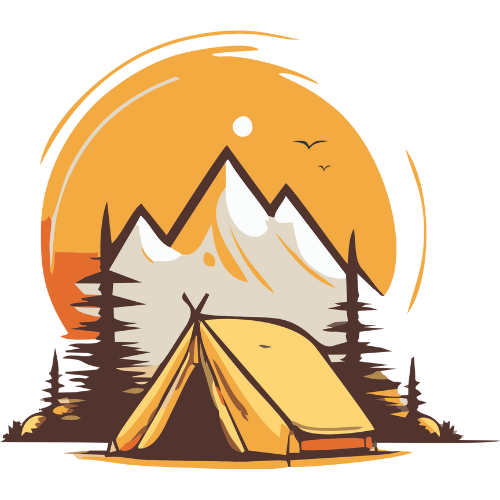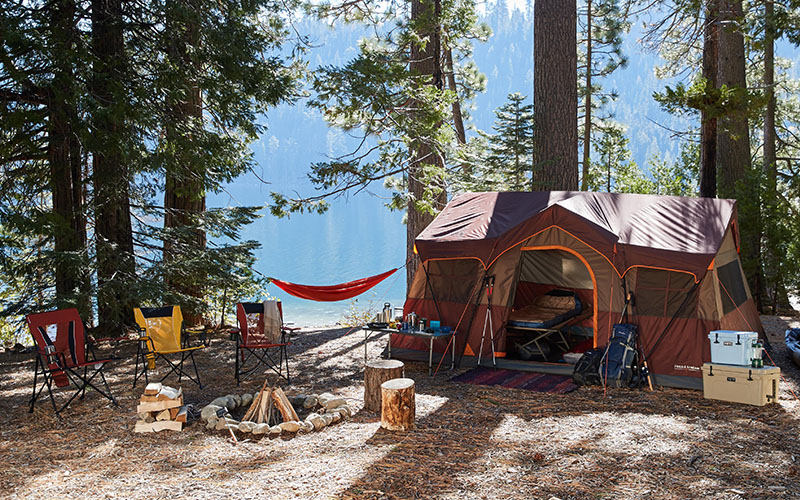Uncategorized
How to Build a Campsite: Essential Tools and Tips
Building a campsite that’s safe, comfortable, and functional is key to a successful outdoor adventure. Whether you’re a seasoned camper or a first-timer, knowing how to set up your campsite properly can make all the difference in how enjoyable your trip will be. From choosing the perfect location to gathering the right tools, this guide will provide you with essential tips and tools for building a campsite that’s ready for anything.
1. Choosing the Perfect Campsite Location
Before you start setting up, the first step is to select the right campsite. The location you choose will impact your comfort, safety, and the overall enjoyment of your trip. Here are some things to consider when choosing a campsite:
Ideal Campsite Location Tips:
- Flat Ground: Always look for flat, level ground to pitch your tent. Avoid areas that are sloped, as this can make sleeping uncomfortable and may cause rain to pool in the tent.
- Away from Water: While being near a water source like a river, lake, or stream is convenient, don’t set up your tent too close. The ground can be damp, and the risk of flooding during rain increases.
- Natural Shelter: Try to set up camp near natural windbreaks, such as trees or rock formations, to protect your campsite from strong winds.
- Not Under Dead Branches: Avoid camping under dead trees or branches that could fall unexpectedly, especially during windy conditions.
- Sun and Shade: Consider how much sunlight or shade the site will receive during the day. You might prefer to have shade in the afternoon or sunlight in the morning, depending on the weather and your comfort.
2. Essential Tools for Building a Campsite
Once you’ve found the ideal spot, it’s time to gather the necessary tools and equipment to set up your campsite. Here are the must-have tools for building a functional and comfortable campsite:
Tent Setup Tools:
- Tent Stakes and Mallet: A good set of tent stakes is essential for securing your tent to the ground, especially in windy conditions. Make sure to use durable stakes made from metal or aluminum. A mallet or hammer is also helpful for driving stakes into tough ground.
- Tarp or Groundsheet: Protect the bottom of your tent from moisture, dirt, and abrasion by placing a tarp or groundsheets underneath your tent. This also helps extend the lifespan of your tent.
- Tent Poles: Make sure your tent poles are sturdy and in good condition. Most modern tents come with color-coded poles for easy assembly.
Campfire Tools:
- Fire Starter Kit: A reliable fire starter kit is essential for starting your campfire safely and efficiently. Choose a kit with waterproof matches, a fire steel, or a flint and striker. Make sure you’re familiar with the process of starting a fire before you head out.
- Fire Pit or Ring: Some campgrounds provide a fire ring or pit, but if you’re camping in the backcountry, you might need to create your own. A fire ring made of rocks can keep your fire contained and safe.
- Firewood: Always bring firewood or know where to find dry, seasoned wood nearby. Avoid collecting wood from live trees, as it can be difficult to burn and is harmful to the ecosystem.
Cooking and Dining Tools:
- Portable Stove or Grill: While cooking over a campfire is fun, a portable camping stove or grill can offer more control over cooking, especially in wet conditions.
- Cookware Set: Invest in a durable camping cookware set with pots, pans, and utensils made for outdoor use. Non-stick options are easy to clean and lightweight, but be sure to bring something to scrub them with.
- Campfire Cooking Tools: For campfire cooking, tools like long-handled spatulas, tongs, and grill grates are essential for safely handling food over the flames.
- Cooler or Food Storage: If you’re camping for several days, a cooler with good insulation can keep your food fresh. Be sure to store your food away from your sleeping area to avoid attracting wildlife.
Lighting and Safety Tools:
- Headlamps and Lanterns: Adequate lighting is a must for setting up camp after dark. A headlamp is perfect for hands-free tasks like setting up your tent or cooking, while a lantern can light up your campsite and provide ambient light.
- First Aid Kit: Always have a first aid kit with you. Make sure it’s stocked with essentials like bandages, antiseptic, tweezers, and any personal medications you may need.
- Multi-Tool or Knife: A multi-tool or camping knife is invaluable for various tasks, from food prep to cutting rope or repairing gear. A good multi-tool will serve you in multiple situations around camp.
3. Setting Up Your Tent and Shelter
Now that you have your tools, it’s time to get to work! Here’s how to set up your tent and shelter for a safe and comfortable campsite:
Step 1: Lay Down Your Groundsheet
Start by spreading a tarp or groundsheet on the ground to protect the bottom of your tent. Make sure it’s slightly smaller than your tent’s base to prevent water from collecting between the groundsheet and the tent floor.
Step 2: Unpack and Assemble the Tent
Unpack your tent and lay it out on the ground. Assemble the tent poles and insert them into the designated sleeves or clips. If your tent has color-coded poles, follow the instructions carefully for quick and easy assembly.
Step 3: Secure the Tent
Once the poles are in place, stake down the corners of your tent with the tent stakes. If you’re in a windy area, make sure to secure the tent tightly with additional guy lines.
Step 4: Set Up the Rainfly
For added protection from the elements, drape the rainfly over your tent. This will help keep your tent dry in case of rain and provide additional protection against the wind.
4. Building a Campfire
Building a safe and efficient campfire is essential for cooking, warmth, and ambiance. Follow these steps to ensure you start a fire correctly:
Step 1: Choose a Safe Fire Location
Select a fire pit or clear a space for your fire. Make sure the area is free of overhanging branches and dry grass.
Step 2: Gather Firewood
Collect kindling, tinder, and fuel wood (larger logs). Arrange your wood in a teepee or log cabin style for optimal airflow.
Step 3: Start the Fire
Use your fire starter kit to ignite the tinder. Once the fire starts, add larger pieces of wood gradually to keep the fire burning.
Step 4: Maintain the Fire
Keep the fire at a manageable size and never leave it unattended. Always have a bucket of water or sand nearby in case you need to extinguish the fire quickly.
5. Additional Campsite Tips
- Leave No Trace: Follow Leave No Trace principles to minimize your environmental impact. Clean up after yourself, dispose of waste properly, and avoid damaging plants or wildlife.
- Organize Your Gear: Keep your campsite organized by storing your gear in designated areas. Use dry bags or storage bins to keep everything clean and accessible.
- Consider Bug Protection: If you’re camping in a buggy area, consider bringing a mosquito net or bug spray to protect yourself from insects.
Conclusion
Building a well-prepared campsite requires the right tools and knowledge, but with the proper setup, your camping trip will be comfortable, safe, and enjoyable. From choosing a great location to bringing the essential tools like tent stakes, campfire starters, and cookware, your campsite will be ready for any outdoor adventure. Keep these tips in mind, and you’ll have everything you need for a memorable and hassle-free camping experience.

